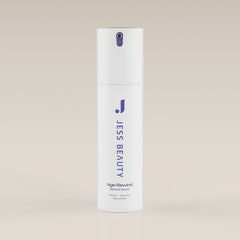Niacinamide for dark spots is revolutionizing the world of facial skincare. Also known as vitamin B3, this essential nutrient is transforming beauty routines around the globe. But what exactly is niacinamide, how does it work on dark spots, and what are its main benefits? Today, we’ll answer your questions.
What is niacinamide and how does it work on dark spots?
Niacinamide is a water-soluble form of vitamin B3, naturally found in foods like milk, eggs, and meat. On the skin, it plays a vital role by strengthening repair processes and reducing cellular damage caused by UVB radiation.
When it comes to dark spots, niacinamide acts with precision. Its ability to inhibit the transfer of melanosomes—structures responsible for transporting melanin to the skin’s surface—helps prevent the accumulation of pigment in epidermal cells. This results in a more even and radiant skin tone.
At JessBeauty, we believe in formulas that combine niacinamide with other brightening agents to boost its effects and offer effective solutions for sun spots, post-acne marks, and signs of aging. For instance, our Shine Bright serum leaves skin glowing and renewed.
What are the benefits of niacinamide for the skin?
The benefits of niacinamide for the skin are becoming increasingly recognized. Among its main advantages:
-
Antioxidant action: Fights oxidative stress, protecting the skin from external aggressors like pollution and sunlight.
-
Anti-inflammatory properties: Reduces redness, irritation, and helps soothe sensitive skin.
-
Sebum regulation: Balances oil production, making it ideal for oily or acne-prone skin.
-
Deep hydration: Strengthens the skin barrier, preventing water loss and improving elasticity.
-
Anti-aging effects: Promotes collagen and elastin production, improving skin texture and reducing fine lines.
How to apply niacinamide correctly?
The order in which you apply niacinamide is key to achieving the best results. Some skincare experts recommend using it after facial cleansing and before heavier creams. In serum form, niacinamide offers faster and more effective absorption.
It can be used up to twice a day—morning and evening. Plus, its high compatibility with other ingredients allows you to combine it with hyaluronic acid, exfoliating acids, and even sunscreens. While niacinamide is not photosensitive, it’s still important to apply sunscreen afterward to maximize its protective effect against dark spots.
What skin types is niacinamide recommended for?
Niacinamide is suitable for all skin types, thanks to its high tolerability. However, it’s always best to consult your trusted dermatologist before introducing any new product into your routine. Here are a few recommendations:
-
Oily skin: Helps regulate sebum and minimize pores.
-
Mature skin: Stimulates collagen and improves elasticity.
-
Sensitive skin: Soothes inflammation and calms redness.
-
Acne-prone skin: Prevents breakouts and fades acne scars.
Can you expose your skin to the sun while using niacinamide?
One of the most common questions is about the relationship between niacinamide and sun exposure. Unlike other active ingredients, niacinamide is not photosensitive. In fact, it acts as an additional layer of protection against sun damage, helping to prevent and correct the formation of dark spots.
Using it during the day is not only safe but recommended—just make sure to pair it with a broad-spectrum sunscreen to enhance your skin’s defense.









